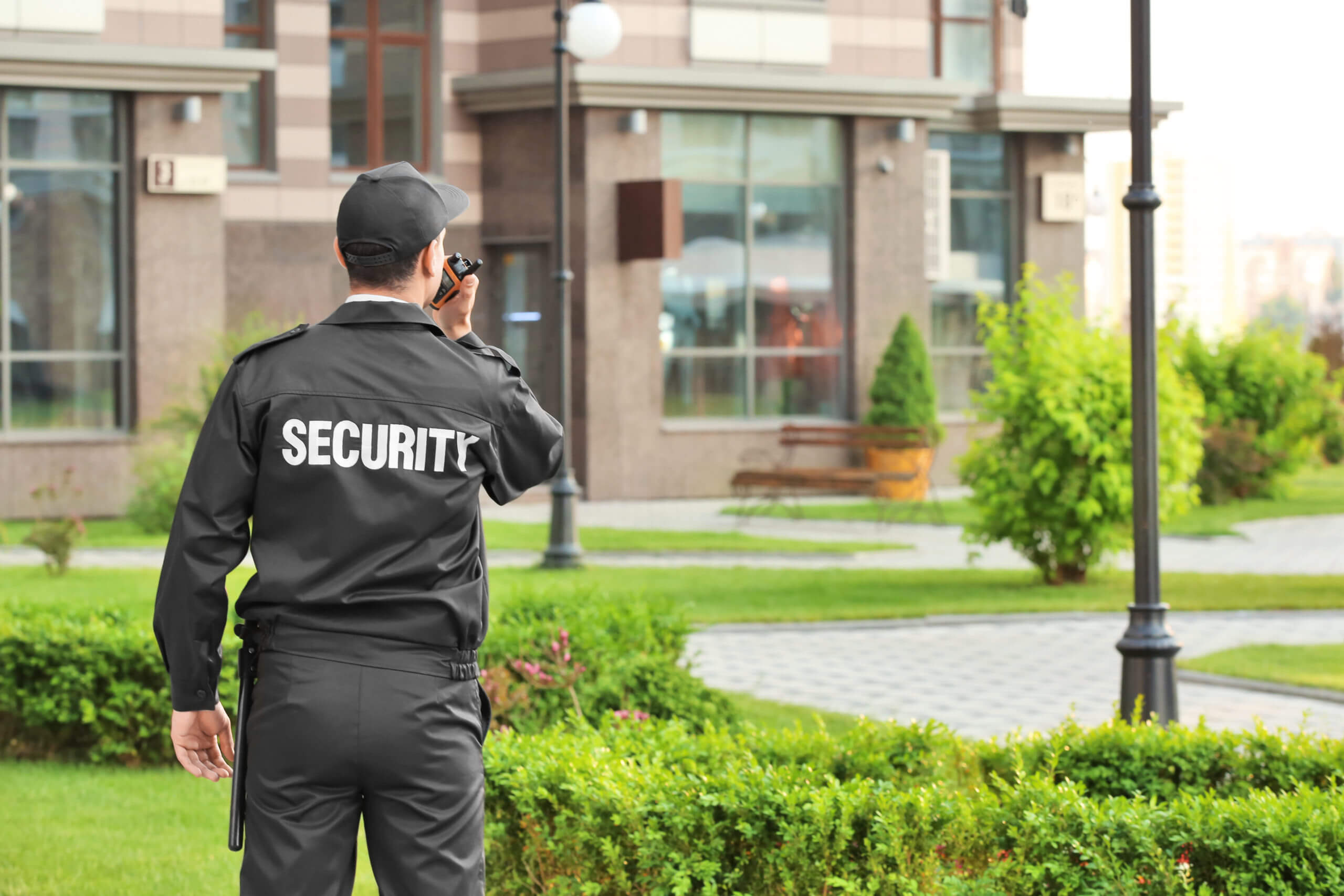How Does the Presence of Armed Security Impact Event Insurance Costs?
The Complex Relationship Between Security Measures and Insurance Premiums
Event planners and venue operators face a critical decision when considering security measures: will the presence of armed security personnel help or hurt their insurance costs? While common sense might suggest that enhanced security would reduce premiums, the reality is far more nuanced and often counter intuitive. Understanding this relationship is essential for making informed decisions about event security and budget planning.
The Insurance Industry’s Perspective on Armed Security
Risk vs. Mitigation: A Delicate Balance
Insurance companies evaluate armed security through a unique lens that balances risk mitigation against potential liability exposure. When insurers evaluate the use of armed officers, they quite often see risks outweigh the benefits for the average company or organization – risks that have a significant impact on both the availability and cost of insurance coverage.
This seemingly paradoxical view stems from actuarial data and claims experience. While armed security can deter certain types of incidents, the introduction of another firearm increases the chances someone will be seriously hurt or killed. For insurers, this translates to potentially higher claim values and increased liability exposure.
Premium Impact: The Numbers Tell the Story
The financial impact of armed security on insurance costs is significant and measurable:
Security Company Premiums:
- Armed guards who carry firearms or other weapons require higher premiums due to the increased risk of incidents
- Armed security officers may cost on average $3-$5 more than unarmed guards, per hour per guard
- Firearm insurance premiums are typically less than $800 annually but can increase with the number of armed personnel
Event-Specific Considerations:
- The premium is the amount you pay for your insurance policy. According to Insureon, the average cost can range from $150 to $257, depending on factors like event size, duration, and location
- High-risk events, such as one featuring fireworks or extreme sports, will naturally have higher insurance costs compared to a low-risk event like a seminar or a conference
Event Insurance Fundamentals: Understanding the Baseline
Core Factors Affecting Event Insurance Costs
Before examining armed security’s impact, it’s crucial to understand the primary drivers of event insurance premiums:
Event Characteristics:
- Attendance Numbers: Events with over 500 attendees, such as festivals or large weddings, will have higher premiums due to increased risk
- Duration: Events lasting 2-5 days, like festivals or conferences, will have higher costs due to extended exposure to risks
- Location Risk Profile: Venues in high-risk areas for natural disasters or theft may lead to higher premiums
Activity-Based Risk Assessment:
- Alcohol Service: Events with alcohol have higher risks of accidents and liabilities. If you’re selling alcohol, you’ll need additional liquor liability coverage, which can increase your overall costs
- Activity Type: A multi-day music festival with thousands of attendees usually costs more than a corporate seminar
Standard Coverage Elements
Event insurance typically includes several key components:
- General Liability: Protection against third-party injury or property damage claims
- Property Coverage: Protection for equipment, decorations, and rented items
- Cancellation Insurance: Coverage for financial losses due to event cancellation
- Liquor Liability: Required coverage when alcohol is served or sold
How Armed Security Affects Risk Assessment
The Insurance Underwriting Process
Insurance underwriters evaluate armed security presence through multiple risk factors:
Increased Liability Exposure:The presence of firearms fundamentally changes the risk profile of an event. The likelihood of physical altercations is higher for such clients. Premiums can be $900-$1200 annually for security companies providing armed services.
Professional Training and Certification Requirements:Armed guards must have the training required by their state as well as a license to carry firearms. Often an armed guard is unnecessary unless you have a high-risk situation that demands top-level security
Venue and Context Considerations:There are certainly situations that warrant an armed officer (i.e. banks, federal buildings, etc.). Insurance companies understand this and are willing to offer insurance for this type of exposure
Risk Mitigation vs. Risk Creation
The insurance industry’s approach to armed security reflects a careful analysis of competing factors:
Potential Benefits:
- Deterrent effect on criminal activity
- Rapid response capability to serious threats
- Enhanced protection for high-value events or VIP attendees
Potential Risks:
- Increased severity of potential incidents
- Higher liability exposure for wrongful discharge
- Public safety concerns and panic responses
- Regulatory compliance requirements
The Relationship Between Security Measures and Insurance Premiums
Security as Risk Mitigation
Not all security measures increase insurance costs. Many proactive security implementations can actually reduce premiums:
Technology-Based Security:Install surveillance cameras, alarms, access control systems, and cybersecurity protocols to reduce risks and potentially lower premiums.
Risk Management Practices:Many insurers offer discounts for businesses that implement strong risk management practices. This can include regular training for security personnel, maintaining high safety standards, and employing thorough incident documentation practices
Professional Security Training:Implement loss prevention measures and comprehensive employee safety training programs. By reducing workplace accidents and liability claims, you demonstrate proactive risk management to insurance providers
Unarmed Security: The Sweet Spot
For many events, unarmed professional security offers the optimal balance between risk mitigation and insurance cost control:
Lower Premium Impact:
- Reduced liability exposure compared to armed security
- Professional presence without weapon-related risks
- Compliance with venue insurance requirements
Effective Risk Management:
- Crowd control and access management
- Incident prevention and de-escalation
- Emergency response coordination
- Documentation and reporting capabilities
Industry-Specific Considerations
Event Types and Armed Security Insurance Impact
High-Risk Events Requiring Armed Security:
- Government and political events
- High-profile celebrity appearances
- Jewelry shows and luxury exhibitions
- Cash-intensive events
For these events, Insurance companies understand this and are willing to offer insurance for this type of exposure, though at premium rates.
Standard Events Where Armed Security May Increase Costs:
- Corporate conferences and trade shows
- Wedding receptions and social gatherings
- Community festivals and fundraisers
- Educational seminars and workshops
Venue Requirements and Insurance Implications
Many venues now require specific insurance coverage and limits:
More venues demand higher liability limits (often above $1 million per occurrence) and may require separate add-ons like Liquor Liability or Cancellation clauses
When armed security is present, these requirements often become more stringent, further impacting overall insurance costs.
Strategies for Managing Insurance Costs with Enhanced Security
Cost-Effective Security Planning
Comprehensive Risk Assessment:Conduct a Comprehensive Risk Assessment: Understand the specific risks associated with your business or personal situation. Identify areas that require attention, such as property damage, liability claims, cyber threats, or natural disasters
Layered Security Approach:Rather than relying solely on armed security, implement multiple security layers:
- Professional unarmed security personnel
- Access control systems and perimeter security
- Surveillance and monitoring systems
- Emergency response planning and coordination
Insurance Provider Collaboration:Where possible, include your insurance provider in the security assessment process by asking which security measures will help you reduce liability and lower coverage costs
Risk Mitigation Best Practices
Documentation and Training:Regular training for security personnel, maintaining high safety standards, and employing thorough incident documentation practices can help offset some premium increases.
Professional Partnerships:Working with licensed, insured security companies transfers some liability and may reduce overall exposure. The presence of lethal weapons means more liability, so it pays to find a reputable company with the appropriate liability insurance, experience and licensing
Cost-Benefit Analysis: Making the Right Decision
When Armed Security May Be Worth the Insurance Cost
High-Value Events:For events with significant financial exposure or high-profile attendees, the increased insurance costs may be justified by the enhanced protection and reduced overall risk.
Contractual Requirements:Some clients or venues may require armed security, making the insurance cost a necessary business expense.
Threat Assessment Results:Professional threat assessments may indicate that armed security is essential for event safety, making insurance cost increases a secondary consideration.
Alternative Approaches to Consider
Enhanced Unarmed Security:
- Increased personnel numbers
- Specialized training for specific threats
- Coordination with local law enforcement
- Technology-enhanced monitoring and response
Environmental Design:
- Improved lighting and visibility
- Controlled access points and barriers
- Emergency evacuation planning
- Communication systems integration
Working with Insurance Providers
Transparent Communication
Pre-Event Planning:
- Discuss security plans with insurance providers during the initial quote process
- Provide detailed security protocols and personnel qualifications
- Share risk assessment and mitigation planning documentation
Professional Documentation:Maintaining clear and comprehensive records of the incident and your response can significantly aid the claims process
Negotiating Coverage and Costs
Competitive Quotes:Compare Quotes and Shop Around: Insurance premiums vary among providers, so it’s crucial to compare quotes from different companies
Specialized Providers:Some insurance companies specialize in high-risk events and may offer more competitive rates for armed security situations.
Future Trends and Considerations
Evolving Risk Landscape
The relationship between security and insurance continues to evolve as:
- Threat profiles change in response to current events
- Insurance companies gather more actuarial data on armed security
- Technology offers new risk mitigation alternatives
- Regulatory requirements shift and develop
Technology Integration
Security monitoring systems allow you to record or log events that could be used to further demonstrate due care, potentially helping to justify security-related insurance premiums.
Practical Recommendations
For Event Planners
Conduct Thorough Risk Assessments: Evaluate whether armed security is truly necessary or if enhanced unarmed security would meet your needs
Engage Insurance Providers Early: Discuss security plans during the initial planning phase to understand cost implications
Document Everything: Maintain comprehensive records of security planning, personnel qualifications, and risk mitigation measures
Consider Alternatives: Explore technology-based security enhancements and coordination with local law enforcement
For Security Professionals
Maintain Comprehensive Insurance: Your business needs insurance to cover replacement costs if your company’s firearm is stolen. You also want liability coverage so your business cannot be sued for negligence if that gun is then used in a crime
Provide Clear Documentation: Help clients understand insurance implications through transparent communication about risks and benefits
Offer Flexible Solutions: Present both armed and unarmed options with clear cost-benefit analyses
Conclusion: Balancing Security and Costs
The presence of armed security at events creates a complex relationship with insurance costs that defies simple answers. While armed security can provide valuable protection in specific high-risk situations, it typically increases insurance premiums due to elevated liability exposure. The key to making informed decisions lies in:
- Comprehensive risk assessment that identifies actual security needs
- Early collaboration with insurance providers to understand cost implications
- Professional security planning that considers multiple mitigation strategies
- Clear documentation of risk management efforts and professional qualifications
For most standard events, enhanced unarmed security combined with technology-based solutions and professional emergency planning provides effective protection while minimizing insurance cost impacts. Armed security should be reserved for situations where threat assessments clearly indicate its necessity, and the added insurance costs are justified by the level of protection required.
The most successful approach involves viewing security and insurance as integrated components of comprehensive event risk management, rather than competing priorities. By working closely with qualified security professionals and experienced insurance providers, event planners can develop cost-effective strategies that provide appropriate protection while managing overall financial exposure.
For professional security assessments and insurance-conscious security planning, contact Phoenix Prime Security. Our veteran-led team understands the complex relationship between security measures and insurance costs, helping you make informed decisions that protect your events while managing your budget effectively.






